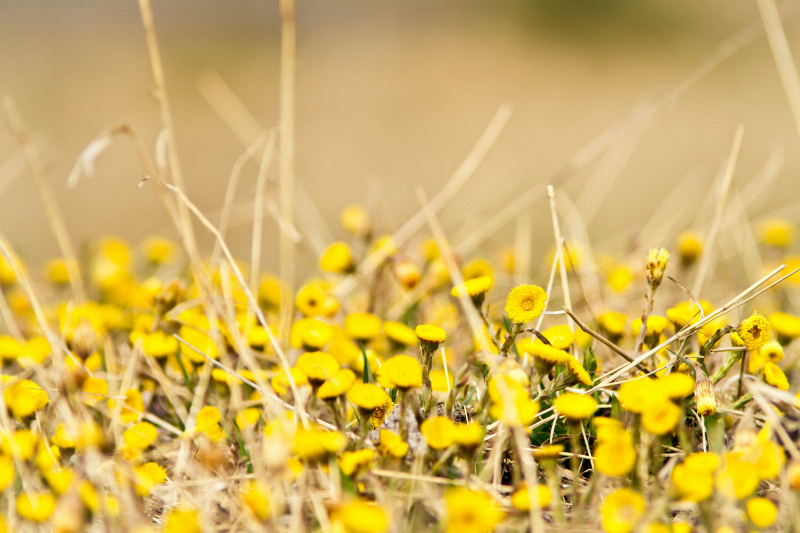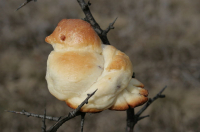Let’s start with the most bizarre one – раковые шейки, literally translated as “little crayfish necks.” Yep, that’s what we call bistort. Moreover, there are also candies of the same name – with a picture of an actual crayfish, not a flower on the package. The sweets were given this name because, supposedly, they look a bit like lobster meat (no, they don’t taste accordingly), as do the pinkish flowers of the bistort.
Chicken blindness (куриная слепота) is a – possibly not very politically correct – name for night-blindness, as well as for buttercup. When I was a kid, someone told me that you shouldn’t look directly at these flowers, since they can make you blind. I believed it back then, but as an adult, I thought that I was simply misinformed. As it turns out, whoever frightened me with this innocent flower was partially right: its juice has the power to irritate your eyes so much that you’ll barely be able to see anything for a while!
A more poetic name was given to the military orchid – “cuckoo’s tears”, or кукушкины слезы in Russian. There are little spots on its petals, which, according to folk beliefs, mark places where those tears fell. There are several versions of the story behind that, but in general, they’re about a mother (either a cuckoo or a woman who turned into one) who cared a great deal about her children, but they grew up without appreciating that. That’s why she cried and that’s why cuckoos leave their eggs in other birds’ nests – to avoid being hurt again.
And it’s not the only botanical name related to motherhood: мать-и-мачеха (“mother and stepmother”) is Russian for coltsfoot. This lovely little flower is a spring favorite of mine. Once you see it around, you can safely say that warm days are right around the corner. The explanation behind its name lies in the difference between the two sides of its leaf: one has a soft white surface, and the other is smooth and dark. The first feels warmer, so it’s associated with motherly love, as opposed to a presumably colder attitude of a stepmother.
Wood cow-wheat, or иван-да-марья (Ivan and Marya), is another plant with highly contrasting parts. Its flowers are yellow, and its leaves are purple. According to a legend, there was a boy named Ivan who protected a girl, Marya, from a lightning strike, and at the place where this happened, these flowers grew – the dark-colored leaves are meant to protect the bright flowers. There are other versions as well, but the general symbolism is the same: a man and a woman, Ivan and Marya.
To learn more about flora (and fauna) in Slavic folklore, see our previous story on the topic.




